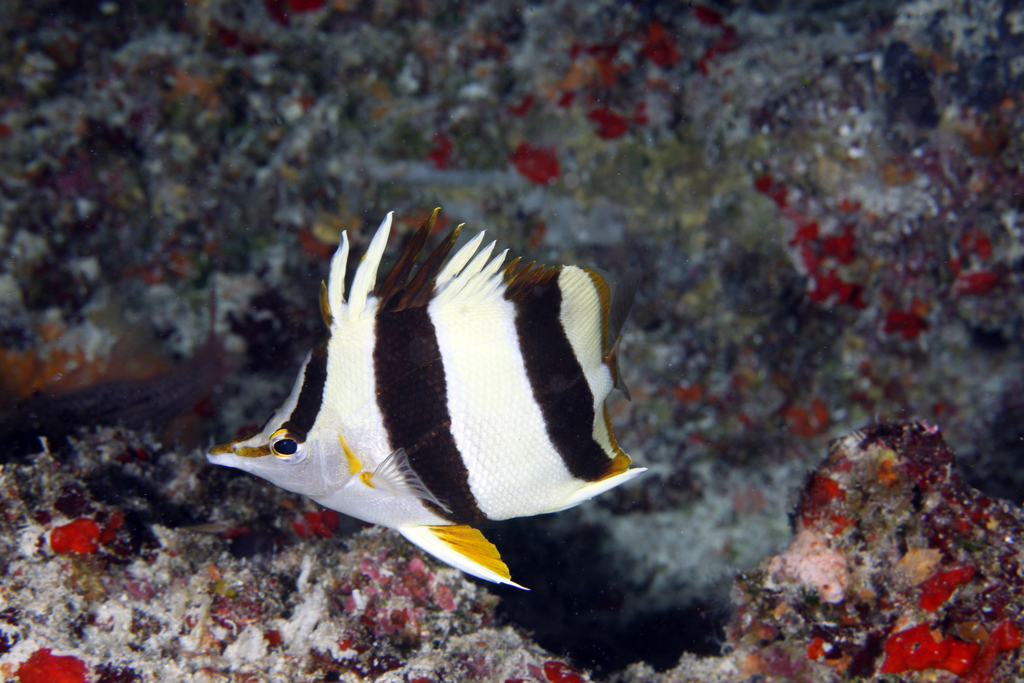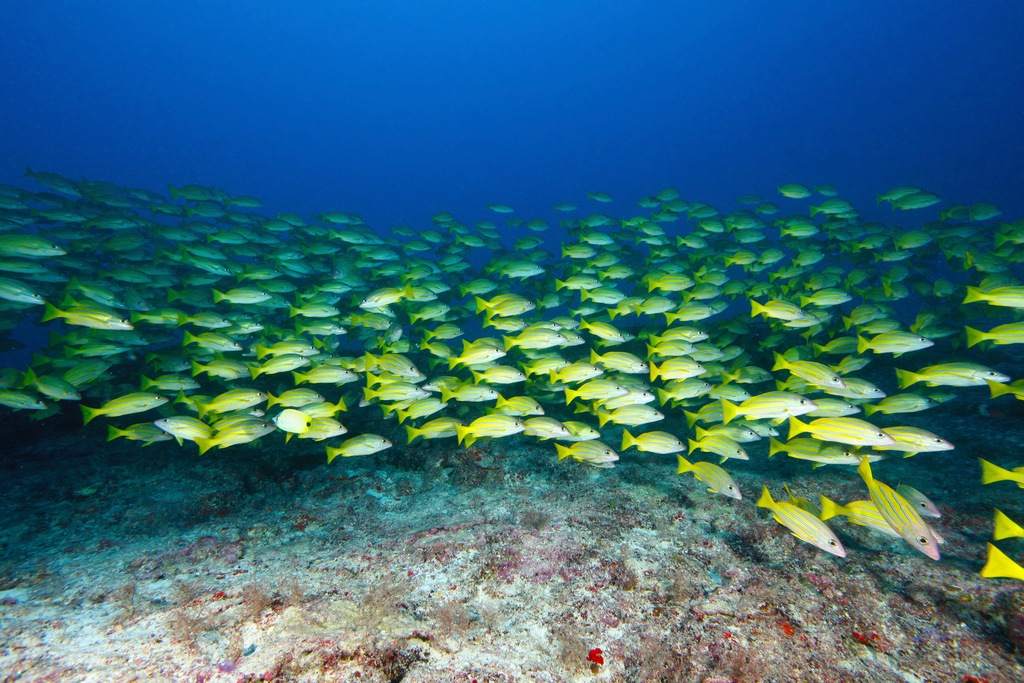Behind the science:
Changes in mesophotic reef fish assemblages along depth and geograp...
2017, September 21
Posted by Veronica Radice
“Changes in mesophotic reef fish assemblages along depth and geographical gradients”
What was the most challenging aspect of your study (can be anything from field, lab to analysis)?
Working in remote locales like the Northwestern Hawaiian Islands (NWHI) poses some unique challenges. Access requires large research vessels, and time at sea is hard to come by (and expensive). Time in the field is thus very limited, and with a large area like the NWHI to cover, accumulating statistically useful sample sizes can take years.
What was the most memorable moment in undertaking this study?
Discovering a “dirty starfish” during a missed drop that landed the dive team in a Sahara-like sand patch.
What was your favorite research site in this study and why?
At Pearl and Hermes Atoll, we have a site at 60-70 m that we call “Prognathodes Point.” It is a ledge that forms a point, and is the type locality for a new species of butterflyfish, Prognathodes basabei. The site is characterized by dramatic structural complexity, with caves, undercut ledges, and multiple terraces covered with black (Antipatharian) corals. The site is inhabited by a wide assortment of uncommon and unusual Hawaiian endemic fish species.
Other than your co-authors, with whom would you like to share credit for this work?
Greg McFall, director of the NOAA Diving Program, was instrumental in supporting our efforts. As the first rebreather divers within NOAA, all of our activities were highly scrutinized, and through deliberate and incremental increases in dive complexity, McFall assisted in developing standard operating procedures over a period of several years.
Any important lessons learned (through mistakes, experience or methodological advances)?
Hawai‘i is tropical at the surface, but not at 100 m. Wetsuits that work fine in 27 °C waters at the surface are woefully inadequate at 15 °C on the bottom!
Can we expect any follow-up on this work?
Our recent papers have focused on high levels of endemism at mesophotic depths, and on the structure of mesophotic fish assemblages. Our next step will be to merge our benthic data with the fish data to examine the relationship between benthic cover and fish assemblage structure. We will be incorporating 3D photogrammetry of the benthos in future mesophotic surveys.
Featured article:
|
|
Changes in mesophotic reef fish assemblages along depth and geographical gradients in the Northwestern Hawaiian Islands | article Fukunaga A, Kosaki RK, Wagner D (2017) Coral Reefs 36:785-790 |
|


